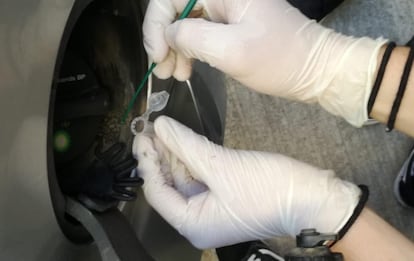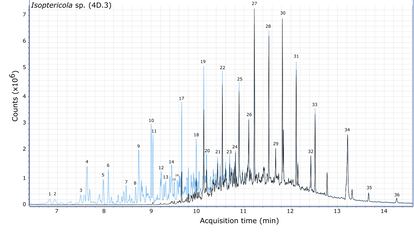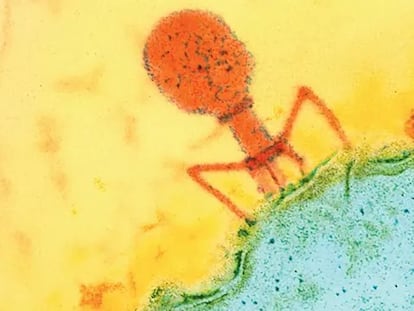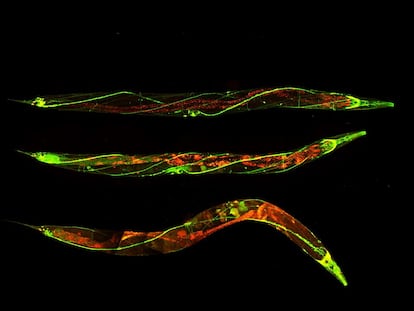Scientists discover a new fuel-eating bacterium below car tank lids
A study has found an unknown microbial species that can be easily sourced and has great potential to break down diesel or gasoline-contaminated environments

Around 99% of the microbes of the trillion species of bacteria, protozoa and fungi (not including viruses) that inhabit the Earth remain undiscovered, according to research led by Kenneth J. Locey of Rush University Medical Center that was published in Pnas six years ago. This means that any investigation in an unstudied environment has a good chance of finding a new piece of this enormous biological puzzle. And that’s exactly what happened when Spanish researchers from the Institute of Integrative Biology (I²SysBio) in the Valencia region looked for microorganisms below the lids of the fuel deposits of diesel and gasoline cars. Not only did the team discover “specific micro niches for microbial life,” but they also found that these sites contain an unknown species of bacteria of the genus Isoptericola with “great potential for fuel biodegradation of diesel or gasoline-contaminated environments.”
Bioremediation is a process that uses natural elements, such as microorganisms, plants and microbes, to detoxify contaminants in soil and other environments. Researchers, including Erko Stackebrandt, a microbiologist at the University of Munich, among others, had discovered that bacteria of the genus Isoptericola could be used for bioremediation. But until now, these strains had been studied in places where fuel or oil spills had occurred. The latest Spanish study, published in the Nature publication Npj Biofilms and Microbiomes, however, looked for possible fuel eaters in everyday environments where the presence of gasoline and diesel is permanent. The objective was to find microorganisms that do not show their bioremediation potential in accidental scenarios such as oil spills, but those have adapted to everyday environments, meaning they will be more effective in decontamination projects.
Biologist Manuel Porcar Miralles, the co-author of study, explains: “I always say that we are a bit like José Saramago in his novels: we start from the premise of ‘what would happen if?’ In this way, we think about what might exist in a site that has not been studied until now.” This theory led them to the surface of automobile tank lids, a hostile and extreme environment where the microbial community must survive almost exclusively on fuel residue.
The study identified the presence of strains belonging to a dozen genera. All showed potential for fuel degradation. “We cultivated several microbial strains that degrade between 50% and 60% of the fuel in a few weeks,” says Miralles. Among the bacteria, the researchers found an unknown species of the genus Isoptericola with a great potential to eliminate contamination.
The study states that “fuel leaks and spills are one of the main causes of soil and groundwater contamination.” To address this problem, the team – backed by extensive research on microbes – turned to bacteria. The research paper explains: “Bacteria have evolved for billions of years, and, as a result, they have developed a very diverse range of metabolic pathways that makes them capable of obtaining energy from virtually every organic compound. Their ubiquity in nature, metabolic diversity, high growth rates, and their ability for horizontal gene transfer, shapes them into perfect candidates for bioremediation of pollutants, including fuels.”
The researchers knew the problem – contamination – and they had a possible solution. But the team thought they could get the best results if they investigated a previously unstudied environment i.e. vehicles. “Combustion cars are still the most used vehicles, but they have not previously been seen as a source of biotechnologically relevant bacteria,” the study states.
To change this, the team looked at bacteria on the surface of automobile tank lids. This area was chosen because it is in contact with fuel and is usually subjected to high temperatures. “[It is] an ideal scenario to find and isolate bacteria with biosurfactant activity, that are already adapted to conditions where the only direct carbon source they receive is the hydrocarbon,” the study explains.

The discovery of a microbial community that could effectively degrade fuel in such a hostile environment as well as the identification of an unknown bacterium with great potential in this area has applications for bioremediation. As Miralles explains, “there are two fundamental biological strategies: either you wait for the microorganisms to act on their own or you can intervene, inoculating the selected ones because they degrade hydrocarbons particularly well.”
These microorganisms can be applied to a wide variety of problems. Max Kelly, from Newcastle University’s School of Natural and Environmental Sciences, is studying how bioremediation can be used to address one of the biggest problems on Earth: plastic pollution in the ocean. His team, according to research published in Environmental Pollution, has found new types of bacteria that grow on plastic in the deep sea. These bacteria represented just 1% of the total community.
Tobias Erb, from the Max Planck Institute for Terrestrial Microbiology in Germany, is also studying the use of the soil bacteria Kitasatospora setae in synthetic carbon fixation – the process of engineering organic systems to absorb carbon dioxide from the atmosphere more quickly than plants do naturally – and even in the production of antibiotics.
Soichi Wakatsuki, a Stanford professor and one of the main leaders of a study on carbon fixation published in ACS Central Science, is working on developing bioreactors for artificial photosynthesis that can convert carbon dioxide from the atmosphere into all kinds of products. According to Wakatsuki, one of the bacterial enzymes being studied is “the most efficient carbon fixer.” He explains: “Some of the enzymes act slowly, but in a very specific way to produce a single product. Others are much faster and can create chemical building blocks to develop all kinds of products. Now that we know the mechanism, we can design enzymes that combine the best features of both approaches and work with all kinds of starting materials.”
Tu suscripción se está usando en otro dispositivo
¿Quieres añadir otro usuario a tu suscripción?
Si continúas leyendo en este dispositivo, no se podrá leer en el otro.
FlechaTu suscripción se está usando en otro dispositivo y solo puedes acceder a EL PAÍS desde un dispositivo a la vez.
Si quieres compartir tu cuenta, cambia tu suscripción a la modalidad Premium, así podrás añadir otro usuario. Cada uno accederá con su propia cuenta de email, lo que os permitirá personalizar vuestra experiencia en EL PAÍS.
¿Tienes una suscripción de empresa? Accede aquí para contratar más cuentas.
En el caso de no saber quién está usando tu cuenta, te recomendamos cambiar tu contraseña aquí.
Si decides continuar compartiendo tu cuenta, este mensaje se mostrará en tu dispositivo y en el de la otra persona que está usando tu cuenta de forma indefinida, afectando a tu experiencia de lectura. Puedes consultar aquí los términos y condiciones de la suscripción digital.











































